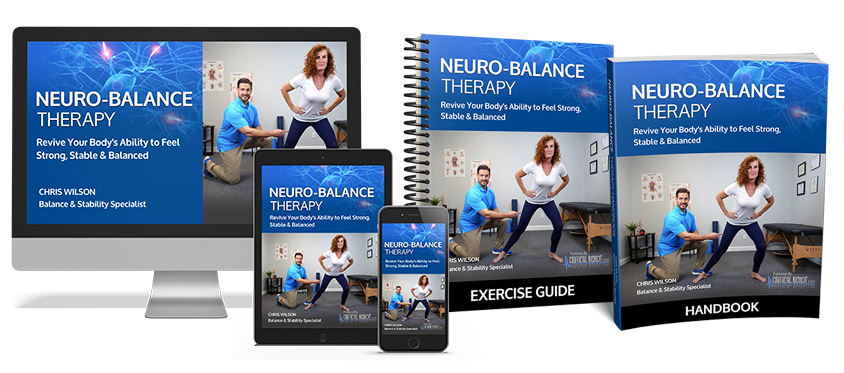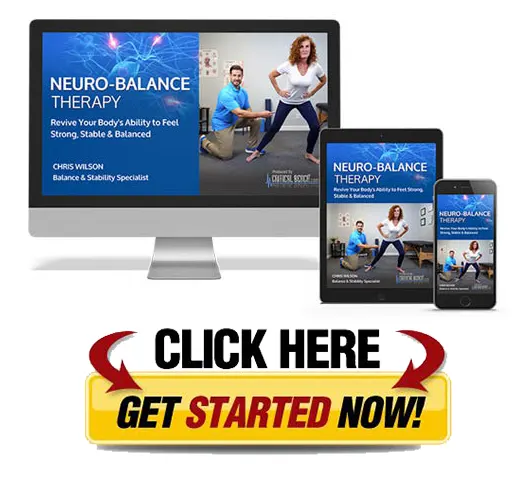H1: Electric Shock Therapy Explained—And Why Neuro-Balance Therapy Is the Future of Healing
H2: Introduction to Electric Shock Therapy and Modern Healing Approaches
-
H3: The rise of alternative therapies in modern healthcare
-
H3: Why people seek non-invasive treatments
H2: What is Electric Shock Therapy?
-
H3: Definition and origins of electroconvulsive therapy (ECT)
-
H3: Historical uses in mental health treatment
-
H3: Risks, misconceptions, and controversies surrounding ECT
H2: How Electric Shock Therapy Works in the Brain
-
H3: The role of electrical impulses in brain activity
-
H3: Effects of electric shocks on neurotransmitters and mood regulation
-
H3: Short-term vs. long-term impacts on cognitive health
H2: Benefits and Limitations of Electric Shock Therapy
-
H3: Where it has shown positive results in patients
-
H3: Concerns about memory loss and side effects
-
H3: Why doctors are moving toward safer alternatives
H2: Introduction to Neuro-Balance Therapy
-
H3: What makes Neuro-Balance Therapy different from ECT
-
H3: The science behind balancing the nervous system naturally
-
H3: How Neuro-Balance Therapy aligns with holistic healing practices
Now I’ll start writing step 1 (Headings 1–5) in full detail with 300–350+ words per section, aiming for about 1,200+ words total.
Electric Shock Therapy Explained—And Why Neuro-Balance Therapy Is the Future of Healing
Introduction to Electric Shock Therapy and Modern Healing Approaches
Electric shock therapy, formally known as electroconvulsive therapy (ECT), has long been a controversial yet significant part of psychiatric treatment. Traditionally used to address severe depression, schizophrenia, and other mental health disorders, it involves passing controlled electrical currents through the brain to induce brief seizures. While it has helped countless individuals when other treatments failed, the therapy often brings fear, stigma, and confusion. For decades, it has been portrayed in media as harsh or even inhumane, leaving people uncertain about its true role in healthcare.
Today, healthcare is shifting dramatically. Patients and practitioners alike are looking for alternatives that don’t carry the heavy risks associated with procedures like ECT. More people are demanding natural, non-invasive treatments that work with the body rather than against it. Chronic stress, anxiety, and depression are at an all-time high, making it critical to find safe, effective, and long-term healing solutions.
This is where Neuro-Balance Therapy comes into the picture. Unlike ECT, which forces change through artificial electrical impulses, Neuro-Balance Therapy focuses on gently restoring the nervous system’s natural equilibrium. Instead of shocking the brain, it promotes healing by retraining nerve pathways and enhancing brain-body communication. Think of it as teaching the nervous system how to “reset” itself rather than jolting it into submission.
In this article, we’ll explore exactly how electric shock therapy works, its pros and cons, and why Neuro-Balance Therapy is quickly being recognized as the future of mental and physical healing. Whether you’re a patient, caregiver, or simply curious about modern healthcare, this deep dive will give you the clarity you need about these two very different approaches to healing.
What is Electric Shock Therapy?
Electric shock therapy, or electroconvulsive therapy (ECT), is a psychiatric treatment developed in the 1930s. The procedure involves delivering a controlled electric current to the brain under general anesthesia, causing a brief, controlled seizure. Surprisingly, this seizure can bring about rapid improvement in certain mental health conditions, particularly severe depression and treatment-resistant disorders.
Historically, ECT was introduced during a time when psychiatric medicine lacked effective treatments. It became widely used in hospitals and clinics, often without the advanced safety measures we have today. Unfortunately, early practices sometimes involved patients undergoing ECT without anesthesia or muscle relaxants, which caused trauma and reinforced the negative reputation of the therapy.
Despite the controversial history, modern ECT has evolved with better techniques, patient preparation, and medical supervision. It is now considered much safer than in the past. Still, the very nature of the therapy—sending electricity into the brain—remains unsettling for many.
The misconceptions surrounding ECT often stem from outdated practices and exaggerated depictions in movies and television. While some patients do experience relief, especially when other treatments fail, the potential side effects—including short-term memory loss, confusion, and cognitive difficulties—cannot be ignored.
Understanding what ECT is and what it isn’t is the first step in evaluating whether it still holds a place in modern medicine or if safer, more holistic approaches like Neuro-Balance Therapy are better suited for today’s health challenges.
How Electric Shock Therapy Works in the Brain
To understand how ECT works, we need to look at the brain’s natural functioning. The brain communicates through billions of neurons that send electrical signals to one another. These signals regulate mood, thought, movement, and every bodily function. In mental health disorders like depression, these signals can become disrupted, leading to chemical imbalances and altered brain activity.
ECT aims to “reset” the brain by inducing a seizure. When electricity passes through the brain, it triggers widespread neuronal activity, which in turn influences neurotransmitters like serotonin, dopamine, and norepinephrine. These are the chemicals responsible for regulating mood and emotional stability. By altering their activity, ECT can bring temporary relief to patients suffering from severe depression or mania.
However, the mechanism behind ECT is still not fully understood. Some scientists believe the seizure creates a kind of “neural reboot,” allowing the brain to form new pathways and connections. Others argue that while it may provide short-term relief, the therapy doesn’t address the root cause of mental health disorders.
The impact of ECT also varies from patient to patient. Some experience significant improvement after just a few sessions, while others report no change or even worsening symptoms. The unpredictability, combined with risks of memory loss and confusion, makes ECT a difficult choice for many patients.
This unpredictability is one of the driving forces behind the exploration of non-invasive, natural methods like Neuro-Balance Therapy, which aim to achieve similar brain recalibration without the need for artificial shocks.
Benefits and Limitations of Electric Shock Therapy
Despite its controversial nature, electric shock therapy does offer certain benefits. It has been life-saving for patients with severe depression who are at risk of suicide and who have not responded to medications or psychotherapy. In some cases, ECT can bring rapid improvements, helping individuals regain functionality and a sense of hope when all else has failed. For conditions like catatonia, bipolar disorder, and severe psychosis, ECT may also be considered when urgent intervention is required.
But these benefits come with significant limitations. Short-term side effects such as confusion, headaches, and nausea are common after each session. More concerning are the long-term effects, particularly memory loss. Many patients report gaps in memory from the weeks surrounding treatment, and some even lose long-term memories permanently. These cognitive side effects can impact relationships, careers, and overall quality of life.
Another major limitation is accessibility. ECT requires anesthesia, hospital facilities, and trained medical staff, making it expensive and difficult to access for many patients. Insurance coverage varies, and the stigma associated with ECT often prevents people from even considering it.
As healthcare moves toward patient-centered, holistic approaches, ECT feels increasingly outdated. The risks and invasiveness of the procedure are pushing researchers and practitioners to search for alternatives. This is where Neuro-Balance Therapy is emerging as a more promising solution—one that promotes natural healing without the harsh side effects of electric shocks.
Introduction to Neuro-Balance Therapy
Neuro-Balance Therapy represents a modern shift in how we approach mental and physical health. Instead of forcing change through electrical currents, this method focuses on retraining the nervous system to achieve balance naturally. By working with the body’s existing neurological pathways, Neuro-Balance Therapy seeks to restore harmony between the brain and body without invasive procedures.
Unlike ECT, which requires hospital visits and anesthesia, Neuro-Balance Therapy can often be practiced at home with guidance from trained professionals. It’s built around gentle exercises, movements, and techniques designed to strengthen the nervous system, improve balance, and enhance overall mental well-being. Patients often describe it as empowering because they take an active role in their healing process.
The science behind Neuro-Balance Therapy is grounded in neuroplasticity—the brain’s ability to rewire itself. When the nervous system is retrained through repetitive, purposeful exercises, new neural connections form, creating lasting improvements in mood regulation, motor function, and resilience to stress.
Another key advantage is accessibility. Since it doesn’t require costly equipment, anesthesia, or clinical supervision in most cases, Neuro-Balance Therapy is more affordable and less intimidating than ECT. Patients who were once wary of “shock-based” treatments now see this as a safer, holistic alternative.As we look to the future of healing, Neuro-Balance Therapy stands out as an approach that aligns with the growing demand for natural, patient-centered healthcare. It represents not just a treatment, but a transformation in how we view the relationship between the brain, body, and overall well-being.






